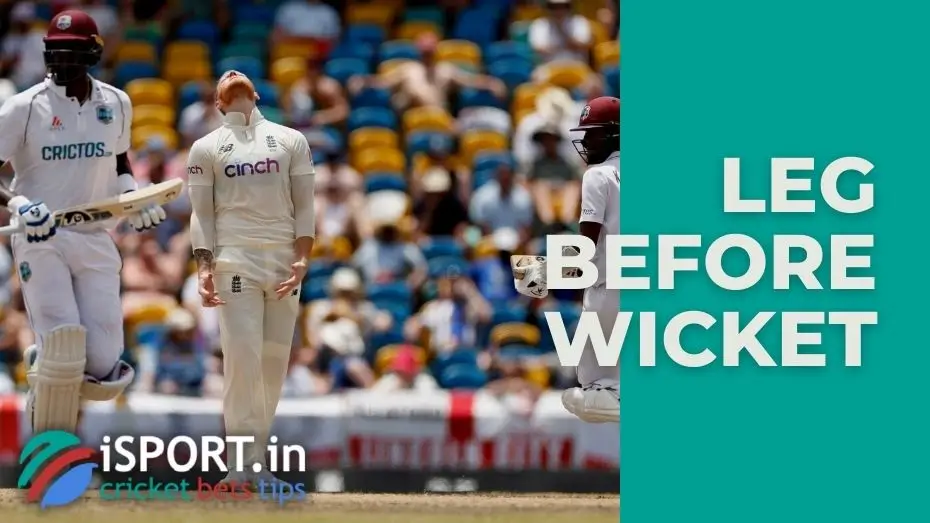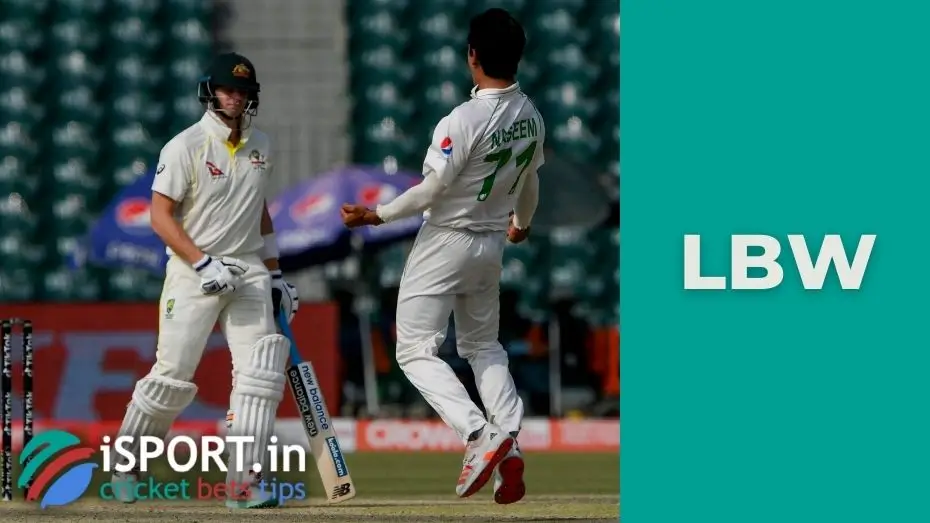LBW (Leg before wicket)

If you think that cricket is a very simple game, then, of course, you are wrong. It looks bright, interesting, dynamic, but some rules in cricket are not always easy to understand. For example, there are tons of reasons for firing batsmen, but even there are nuances. An example of this is LBW (Leg before wicket).
In this article, we will analyze in detail what this term means, what conditions must be met for a batsman to be dismissed for the leg before wicket, in what cases a batsman can remain on the field, and whether there is a possibility to challenge the referee’s decision, which was established by the LBW.
LBW (Leg before wicket) in cricket: definition
At first, it may seem that the LBW rule in cricket is designed specifically to confuse cricket players and fans. Despite the simplicity of the definition, it has some nuances. However, if you study this term consistently, you can make sure that you can still understand it.
Let’s start with a short and simple definition:
LBW (Leg before wicket) is a method of firing batsmen, which is used if the ball collides with the player’s body (usually a foot) and thus does not continue to move. Although in theory, the trajectory was such that it could have hit the wicket.
Simply put, the LBW was designed to prevent the batsman from using his body to stop the ball. This concept first appeared in the laws of cricket in 1774, when batsmen began to use their pads to protect the wicket. Subsequently, this rule was periodically changed.
LBW (Leg before wicket): exact conditions
Although the definition of LBW itself may seem very simple at first glance, in practice it is much more complex. Several conditions must be met to count the leg before wicket. If at least one of them turned out to be unfulfilled, the LBW would not be counted.
Let’s take a closer look at what these conditions are:
- The ball must be legal. This condition is one of the most obvious and important: there must be no no-ball.
- The ball must not only hit the leg side. The ball must pitch between the wicket and the wicket, either outside the wicket area or not pitch at all, before hitting the batsman. Thus, not every throw on the leg side of the wicket can result in the loss of the wicket, even if the batsman has left the ball. To highlight the area suitable for pitching, you can draw an imaginary line parallel to the long axis of the pitch from the stump leg.
- The ball must never touch the batsman’s bat. If the projectile touches the bat (or even the glove, as according to the cricket rules, it is considered part of the bat), the batsman cannot be given the leg before wicket.
- The ball must touch the batsman. In this case, it does not matter where the projectile hits: it can touch both an unprotected part of the batsman’s body and any part of his equipment (except, as we said above, the bats and gloves).
- The ball must hit the line. The batsman must hit the ball exactly between two wickets.
- The most important condition: the ball must hit the wicket. Imagine that the ball did not bounce off a part of the batsman’s body but moved on. If its trajectory was constructed in such a way that, without bouncing off the leg or any other part of the batsman’s body, it would have hit the wicket, then the referee can assign leg before wicket. This moment, by the way, is the most difficult one. Everyone can watch the video replay for a long time and try to understand whether the ball would have hit the wicket or not.
As you can see, even such a seemingly simple rule has some nuances. However, if you deal with them in detail, any difficulties disappear, and even a newbie cricket fan will be able to determine whether the leg before wicket was counted correctly.

LBW (Leg before wicket): Under what circumstances does a batsman leave or stay in the game?
It is not always possible for a batsman to leave the field due to the leg before wicket. There are certain circumstances under which he is fired and under which he remains in the game. We will now consider these points in detail.
The batsman doesn’t leave the game if:
- Before touching the batsman, the ball still, at least indirectly, touches the player’s bat or glove.
- When the ball goes out of the leg stump line, regardless of whether the ball would have hit the stumps or not (by the way, this point in the rules is considered one of the most important when deciding on the leg before wicket).
- The batsman is struck on the pad outside the line of the stumps after attempting to hit the ball.
- Accordingly, the last condition that saves the batsman is if there was a no-ball.
A batsman is eliminated from the game if:
- The batsman is struck on the pad, and the ball does not go beyond the leg stump line (i.e., the ball hits stumps or goes out of the stump line).
- The batsman is struck on the pad outside the line of the stumps without first attempting to hit the ball.
It is also important to note that a batsman can be eliminated under the LBW (Leg before wicket) rule, whether the ball hits his pad or not.
LBW (Leg before wicket): opportunity to challenge the decision of the judge
It can be difficult for a judge to determine whether there was an LBW or not. Perhaps the LBW’s decision is one of the most difficult for them, as it can subsequently become an object of criticism from commentators and viewers. However, in recent times, technologies such as Hawk-Eye have played a significant role in defining leg before wicket. This makes the work of the judge much easier in uncertain cases.
In addition, it has recently become possible to challenge judges’ decisions using the DRS (Decision Review System). Any of the parties can request to challenge the leg before wicket. Typically, this can be done twice in each inning in test matches and once in one-day matches. Of course, these restrictions apply only to unsuccessful attempts to challenge: for example, if the side that requested DRS for help is right, it does not lose the right to use such an opportunity again.
It is worth noting that there is not so much time to request DRS, something like thirty seconds. At the same time, a player who is thinking about whether to make a request can, at most, ask a teammate for advice. An interesting incident once happened: Australian cricketer Michael Clarke was accused of allegedly looking towards the pavilion, and he was allegedly shown something from there. This is not allowed because foul play teams can hire video analysts to track potential leg before wickets and give players a signal if the referee’s decision should be challenged.
It should also be noted that verification is only carried out if the submitted application is legal.
Now you know the basic information about the term LBW (Leg before wicket). Of course, this is a confusing phenomenon in cricket, but it must be noted to understand better what is happening on the field. We also recommend watching a video on YouTube, that explains this term in detail. Just type “Leg before wicket” into the search bar and watch the very first video. Also, do not forget to leave comments below this article, in which you can express your attitude towards LBW.
